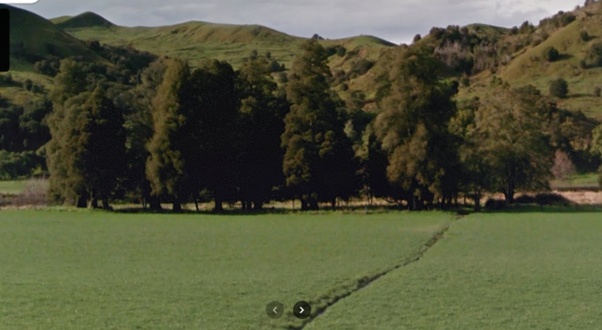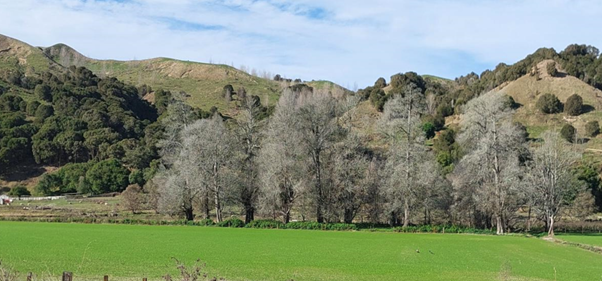15 October 2024
In the June 2023 issue of Panui Taiao we discussed potential impacts of silt deposition from flood events on our mature native trees.
One year on from major weather events of 2023 and sadly we are starting to see the effects in many places across the district. The irony, with the dieback of native trees on flood plains is that many of the dead trees are kahikatea and pukatea which are naturally tolerant of water logging.
Council’s Principal Biodiversity Advisor, Don McLean recently conducted a drive-by assessment of some stands of native trees, visible from Waingake Road in the Te Arai catchment. During Cyclone Gabrielle the Te Arai River flooded a significant area, particularly downstream of Pyke’s weir. This is where most of the affected trees are located.
A grove of 10 or more dead kahikatea trees was observed (photos below). Don noticed stands of kanuka on the river terraces were also standing dead in certain sections. Stands of exotic conifers had also been affected near Pyke’s weir.
Some higher terraces (possibly out of reach of cyclone Gabrielle water level) had some native tree stands which were dominated by titoki and these were healthy. One lone Pukatea was also dead adjacent to the road. The death of the trees is likely to be from water logging and thick silt deposition.
Further upstream, a group of totara trees were present near the turnoff to the water treatment plant. One individual had some patchy dieback which looks similar to “totara dieback” that was noted by forest research several decades ago.
Aerial images taken shortly after Cyclone Gabrielle showed heavy siltation had occurred in the cyclone which suggests the dieback likely to be from the impacts of silt.
Scientists from Manaaki whenua- Landcare Research were in Gisborne during August and September to set up some permanent monitoring plots in some of the most affected patches of lowland forest fragments around Te Tairawhiti.
This research will examine whether flooding and sediment deposition promote weed invasion or native regeneration, including of locally threatened and potentially flood-adapted species like Pittosporum obcordatum. By establishing monitoring now, they will be able to track forest mortality and recovery through future visits.
Standing dead trees do present some challenges for people working near or around them however they continue to provide habitat for insects, birds and bats, so immediate removal is not necessarily recommended if they are not posing health and safety risk.
There are few mature native trees remaining in the landscape of the Te Arai so unnecessary removal of dead and dying trees should be discouraged.

Image of trees prior to Cyclone Gabrielle

View of the same trees June 10, 2024